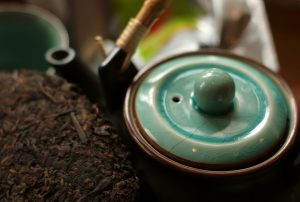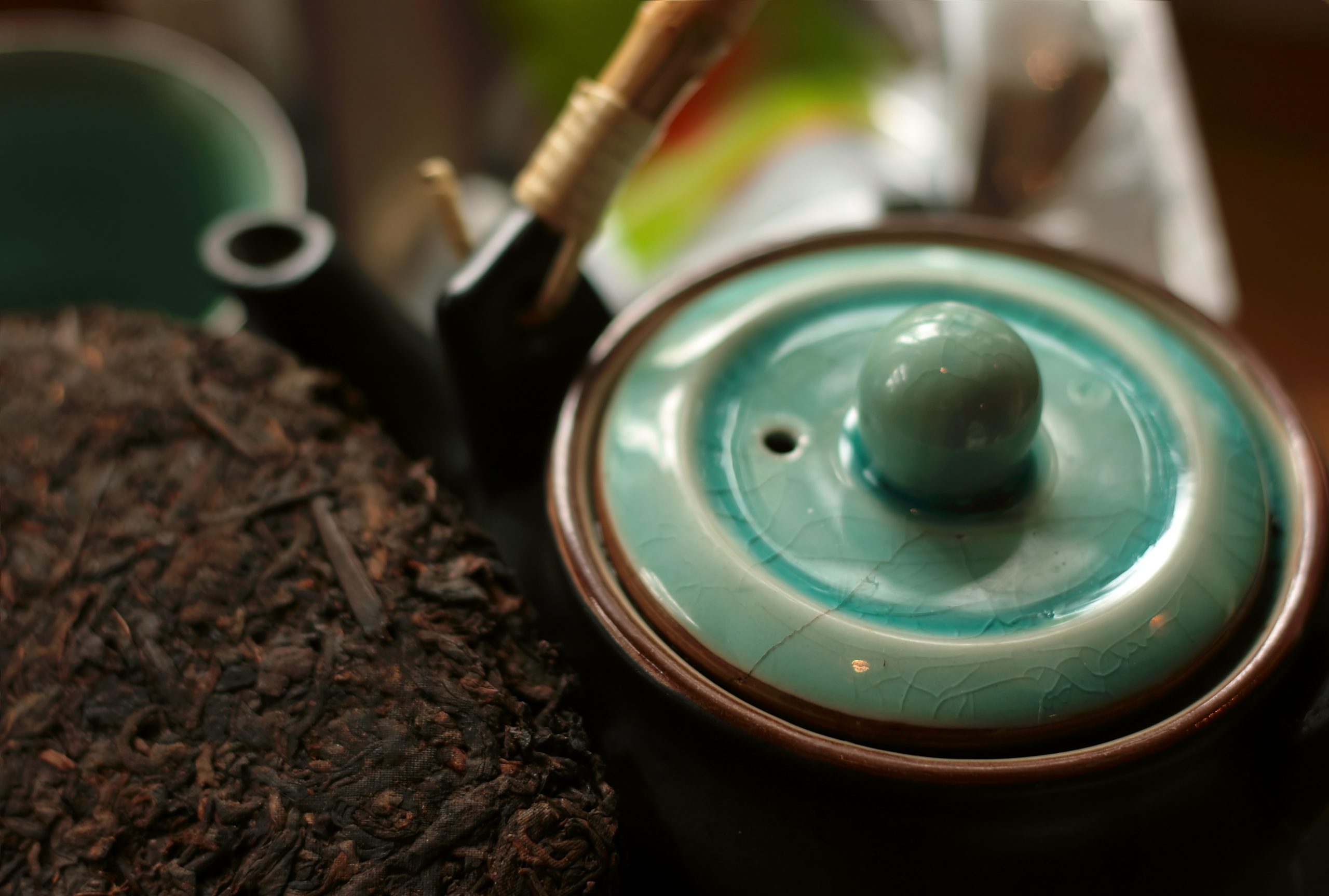“When tea becomes ritual, it takes its place at the heart of our ability to see greatness in small things. Where is beauty to be found? In great things that, like everything else, are doomed to die, or in small things that aspire to nothing, yet know how to set a jewel of infinity in a single moment?”
Muriel Barbery, The Elegance of a Hedgehog
This week Shannon and I are off to The Chinese Tea Shop for a lesson in the Gong Fu Cha tea making method.
If you think gong fu sounds a little like kung fu then you’re not far off. Gong fu is a Chinese term that refers to expertise in any study, learning or practice that requires patience, energy and time to complete. The Gong Fu Cha method is an artful method of tea making that maximizes the taste of high quality tea.
As we make our way into the shop on East Pender Street, I’m not sure what to expect but am instantly put at ease by shop owner Daniel’s warm greeting. He starts off by showing us around the shop, pointing out the different teas. The are numerous samples of loose leaf tea to smell, as well as the impressive and decoratively wrapped giant wheels of pu-Erh, a compressed, fermented tea which is dried, rolled and then aged for up to 100 years.
We learn that there are 3 basic types of tea to consider today: green tea, oolong tea and black tea. Each type has experienced a different level of oxidization; with green being unoxidized and light tasting, oolong partially oxidized and a bit stronger and black tea fully oxidized and strong in flavour. Regardless of tea type, what you’re after in selecting a tea is the hand picked, tender tips of the smaller tea leaves; as opposed to the machine picked dregs that make up your average tea bag.

Daniel asks us what type of tea we’d like to taste today and we decide on green; which he says is very cooling and an appropriate choice for this hot day. We take a seat at the low table in the centre of the shop. On the table are a kettle and a large tea tray, on which rest several tiny teapots, a pitcher, a strainer and an assortment of tea bling.
We learn that there are four variables to consider when making tea, these being:
(1) teapot size (ranging from 70 to 225 ml)
(2) quantity of tea (from 2 to 4 tablespoons)
(3) water temperature (between 75 and 100 degrees )
(4) brewing time (6-10 seconds)
Once the basics are understood you can play with these variables; for example, increasing and decreasing brew time to bring out different properties in the tea. Today we’ll be using a 70ml teapot with 1 tablespoon of tea, our water heated to 80 degrees and brewing for 8 seconds.
Historically, Chinese tea makers would have observed the bubble size and sounds of the heating water to achieve the right water temperature. Water temperatures between 75 and 85 degrees produce a loud, rapid sizzling sound and 3mm bubbles referred to as “crab eyes.” Between 90 and 95 degrees the water has a less frequent sizzling sound with a lower pitch, producing large, 8mm bubbles called “fish eyes.” Thankfully Daniel has a kettle that conveniently allows us to heat the water to the exact temperature desired with the push of a button.
The are four basic steps to making tea:
(1) Warming the pitcher, pot and cups
(2) Rinsing the leaves
(3) First brew
(4) Second brew
To begin the tea making process, Daniel pours hot water into the teapot, pitcher and cups to warm them and places them aside. Once warm the water will be discarded.
Next he rinses the leaves. This is done by placing the tea in the pot and pouring hot water in until it flows over the top of the teapot. He replaces the lid and waits three seconds before pouring the water out. We won’t drink this first round as it is simply meant to clean the leaves.
Pouring from high in the air, Daniel fills the teapot again letting it overflow before replacing the lid. He lets it steep for 8 seconds while he pours hot water over the teapot, warming the tea from inside and out. After 8 seconds have passed he tilts the teapot lid and pours the tea through a strainer into a glass pitcher. He carefully shakes every last drop from the pot as any water left behind would over cook the delicate leaves, ruining future rounds. He pours the tea from the glass pitcher into our warmed cups and uses wooden tongs to expertly place our cups in front of us. He then teaches us how to hold the cup with three fingers and instructs us to slurp loudly as we drink, which cools the tea.
We talk a little about what we taste. The tea is amazing. The flavours are subtle and well balanced, with a hint of nectar and none of the bitterness that tea bags so often have. There is nothing to be added to the tea; it is perfect.
Daniel prepares our second round, adding two seconds to the brew time. It’s very slightly different this time; so subtle it’s hard to articulate. Tea tasting is definitely a skill to be developed. Each successive brewing (there can be as many as 10) further breaks down different aromatic compounds in the leaves, bringing out new flavours in the tea.
It’s all very different from what I’m used to. Here, we brew tiny amounts of high quality tea for a very short period of time – as opposed to steeping large amounts of low quality tea for much longer periods – and you can taste the difference. Rather than a metal or ceramic teapot, we use a clay yixing teapot which is porous, allowing the tea to breathe as it brews and wicking away any remaining moisture after the teapot is emptied, keeping the leaves from over cooking.
Daniel performs the entire ritual with grace and I particularly enjoy the hot water being poured over the teapot with each round. I imagine the warm shower is quite enjoyable for the little teapot, as he is baptized repeatedly – each round bringing a new life to the tea, subtly transforming its flavours.
Aesthetics aside, I think my favourite part of this tea method is the social element. As Daniel prepares a new round, an old man wanders in and joins us at the table, pushing a little tea cup forward with a nod. Daniel rinses and warms the cup and pours us all our next round of tea. I feel like we’re at a neighbourhood pub. With a thick accent the old man tells us how the tea is “very healthy” for us and smiles and nods encouragingly as we loudly slurp our tea. There is something incredibly nourishing about sitting around a table and having someone pour you tiny rounds of tea.
Once our lesson is complete all that remains is for Shannon to buy the missing accoutrements so that she can prepare the tea at home. Bag of goodies in hand we bid Daniel farewell.


